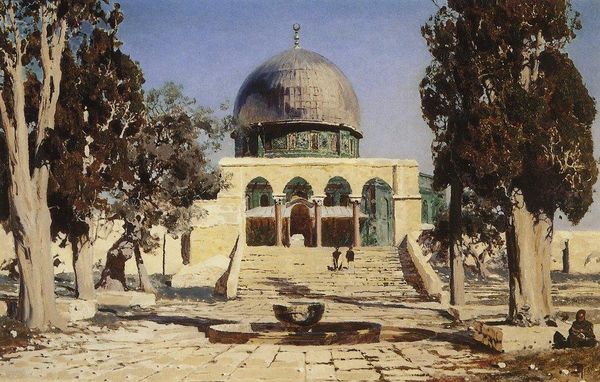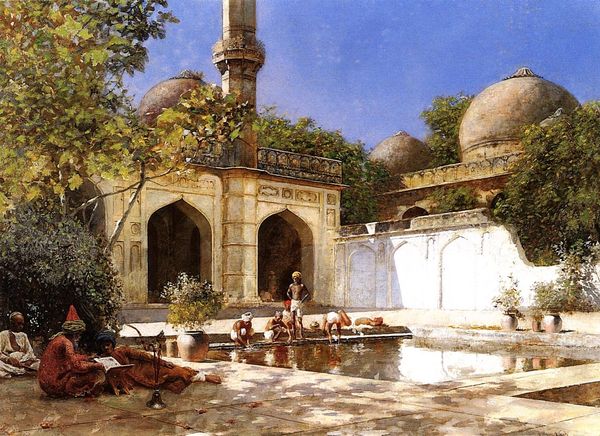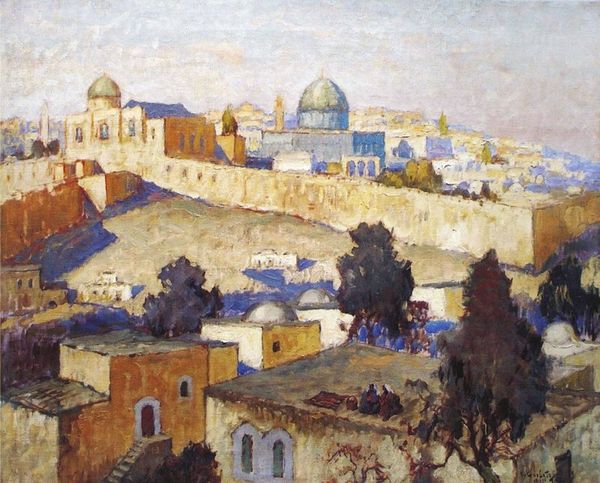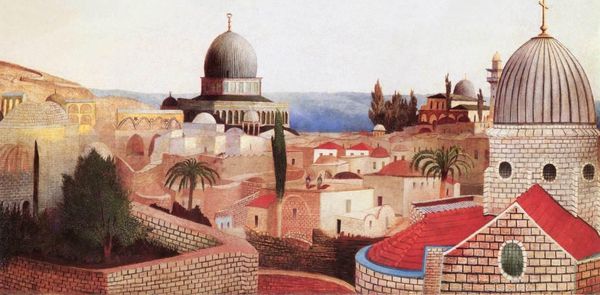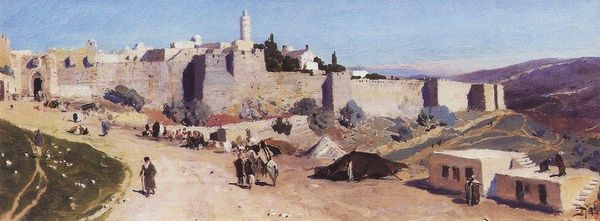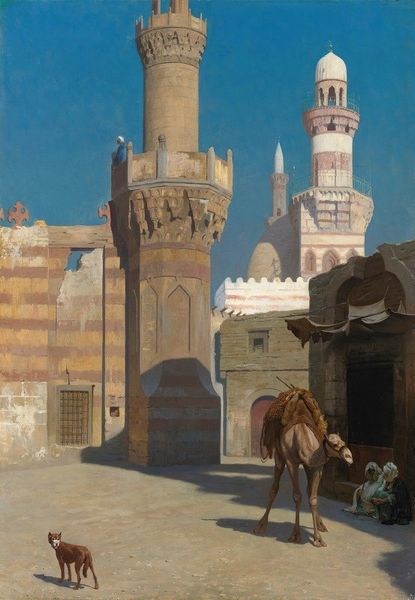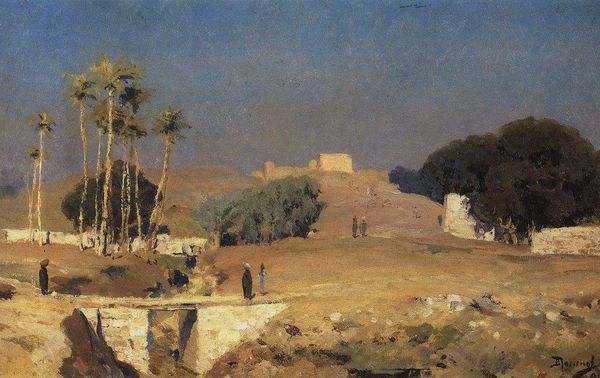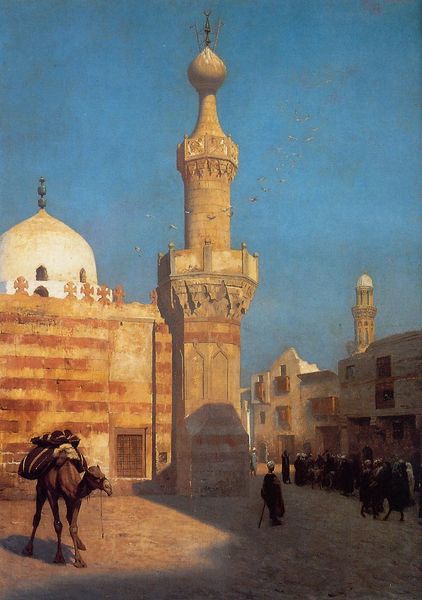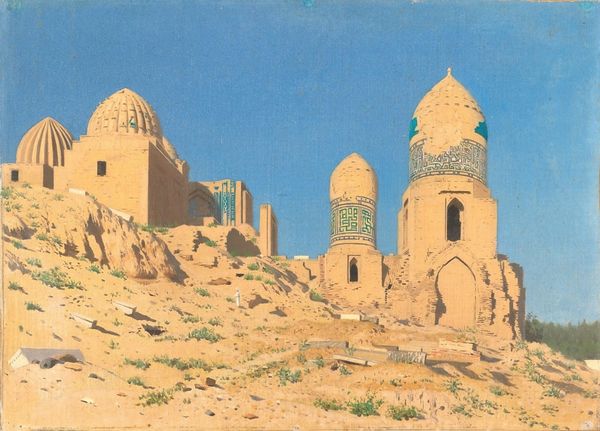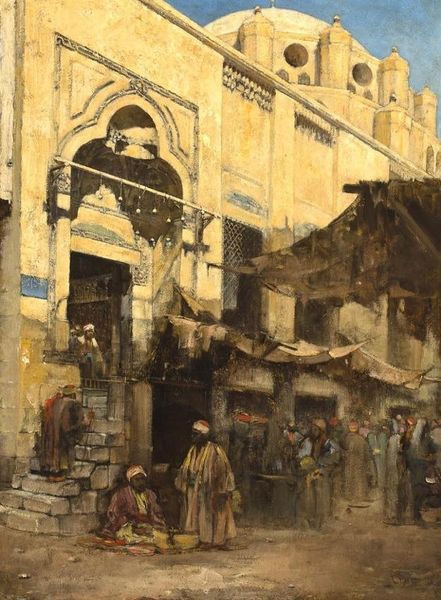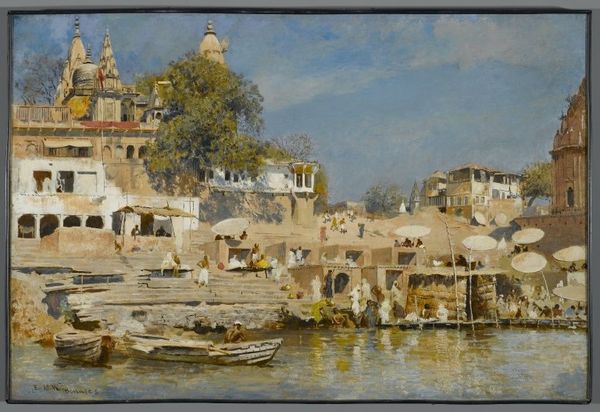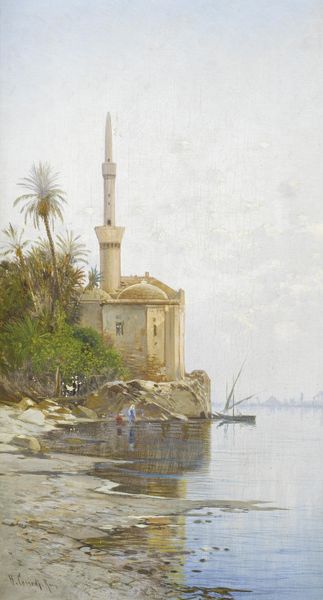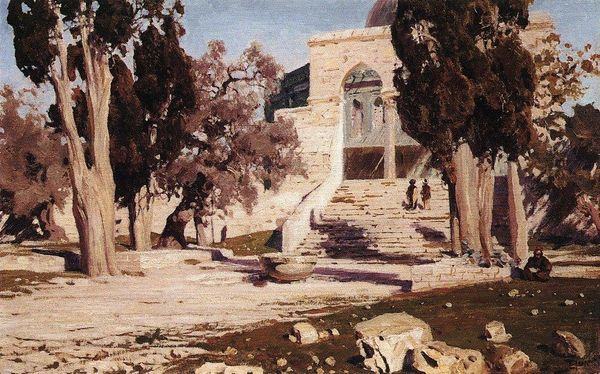
Copyright: Public domain
Editor: So here we have Vasily Polenov's "The Mosque in Jenin" from 1903, painted in oils. It's incredibly serene; the soft blues and whites give it such a tranquil feel. How do you interpret this work, considering its time? Curator: The painting offers a window into the orientalist movement within Russian art. Polenov, like many European artists of the time, traveled to the Middle East, seeking what they perceived as authentic and timeless cultures. This portrayal of a mosque, bathed in sunlight, almost romanticizes the scene. Consider the political implications of a Russian artist painting Islamic architecture during a period of expanding empires and shifting power dynamics in the region. What might the intended audience back in Russia have felt seeing such a scene? Editor: That's a great point. I hadn't considered the power dynamic. The emphasis on the mosque's architecture could be seen as an attempt to exoticize or even subtly claim ownership over the cultural landscape, right? Curator: Exactly. And we should also ask ourselves how the depiction of Jenin in 1903 squares with the historical realities of the city. The romanticized presentation of holy places contributes to a broader visual narrative where the East is often perceived as a land of ancient beauty, ready to be discovered or, some would argue, dominated. Do you see anything in the visual composition itself that suggests this perspective? Editor: Well, the placement of figures is very subtle, almost like decorations, they blend in with the walls. I can now notice how this visual arrangement further enhances the monumentality of the mosque, giving it prominence and reinforcing the idea of an exotic and timeless 'other' that you mentioned. Curator: Precisely. It is interesting how Polenov’s choice of plein-air painting lends a sense of immediacy and authenticity, yet also mediates that authenticity through a Western lens. It reminds us to look critically at the representation of culture. Editor: I'll definitely carry that with me; it makes you think about the unseen layers. Thanks for shedding light on the historical and political subtext. Curator: My pleasure. Considering such contexts makes viewing art more insightful and a great deal more enriching.
Comments
No comments
Be the first to comment and join the conversation on the ultimate creative platform.
